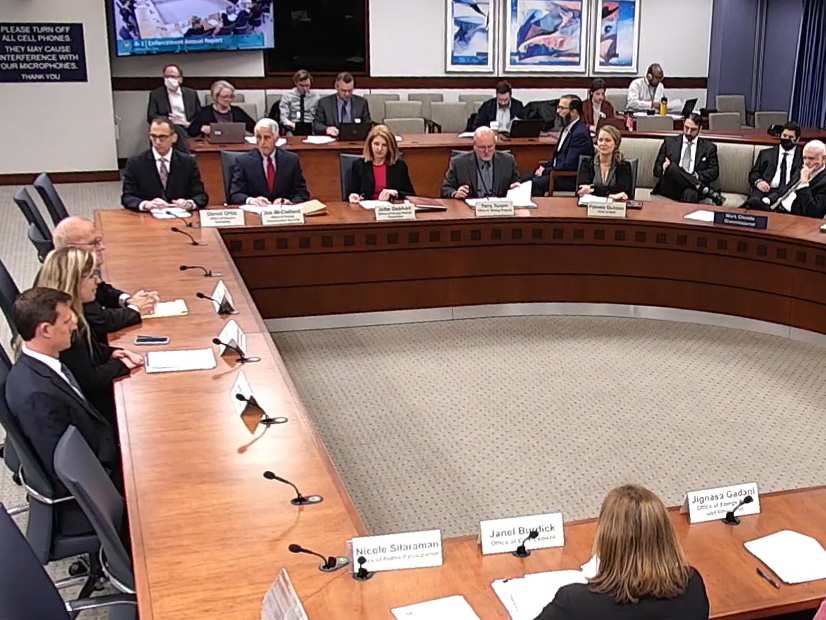
FERC approved 11 settlements last fiscal year that resulted in market participants paying a total of about $57.52 million in penalties and disgorgements for alleged violations, Office of Enforcement staff told commissioners at their open meeting Thursday.
The amount represented more than a sevenfold increase over the previous fiscal year’s $7.9 million, though the bulk of the money came from a massive settlement with Salem Harbor Power Development, which in June agreed to pay nearly $43.8 million in penalties and disgorgement (IN18-8). Enforcement had alleged that the company behind the Salem Harbor gas plant in Massachusetts misled ISO-NE about the construction timeline of the project and took more than $100 million in capacity payments before it was in operation. (See Developer in ISO-NE Hit with FERC Fine for Capacity Market Fraud.) The case also cost ISO-NE $500,000 for mishandling the project’s delays. (See FERC Investigation Faults ISO-NE in Capacity Market Fraud.)
The details of the case were included in Enforcement’s annual report for fiscal year 2022 (Oct. 1, 2021, to Sept. 30). Even without the Salem Harbor settlement, Enforcement still collected about $5.8 million more than it did in FY21, when FERC Chair Richard Glick lauded the office for its aggressiveness. (See FERC Enforcement Rebounds from COVID Slowdown.)
“I think the office is back in terms of being active [and] making sure it fulfills its responsibilities that the commission gives it,” Glick said Thursday, using similar rhetoric as he did last year. “It’s important to have the cop on the street so that people … think twice before they engage in market manipulation, before they try to evade a commission rule.”
Glick highlighted the fact that, of the total amount, about $34 million were returned to customers through disgorgement. But Enforcement’s Division of Audits and Accounting, he noted, also directed about $158 million to be refunded or prevented from being collected as a result of 51 findings of noncompliance. This amount was also up significantly over FY21, when it directed $18.5 million.
New investigations were also up, with the office’s Division of Investigations opening 21, compared to 12 in FY21. According to the report, “12 involved potential market manipulation, nine involved potential tariff violations and seven involved potential misrepresentations prohibited by the commission’s Duty of Candor rule. The 21 investigations involved a wide range of additional issues, including NERC’s Rules of Procedure, ISO/RTO must-offer requirements and Section 205 of the” Federal Power Act.
While it does not disclose the specifics of these investigations, the report provides some examples of those that were closed without enforcement action. Five of these were based on 10 referrals from RTO market monitors, and often the office could not find sufficient evidence any rules were broken, or it found minor, unintentional rule violations that it determined did not cause any substantial harm to the markets. The other five referrals that resulted in new investigations remain open.
“Ensuring that our energy markets are free from manipulation so that they can continue to serve consumers is a top priority at FERC, and it requires vigorous oversight and enforcement efforts,” Glick said.



